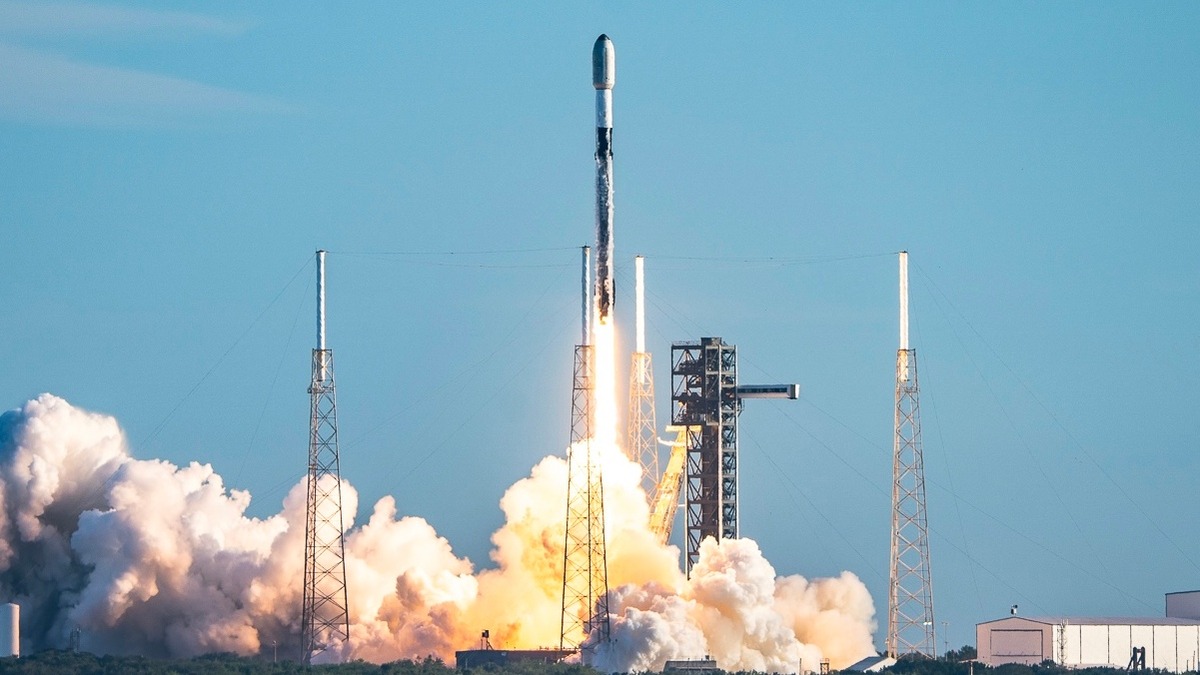SpaceX is gearing up for another exciting Falcon 9 launch, carrying 23 Starlink satellites to low-Earth orbit.
The launch is scheduled for Tuesday, February 18, 2025, from Space Launch Complex 40 (SLC-40) at Cape Canaveral Space Force Station, Florida.
The liftoff window opens at 6:00 p.m. ET and extends until 10:00 p.m. ET, with backup opportunities available on Wednesday, February 19, starting at the same time.
Mission Overview
This mission will deploy 23 Starlink satellites, further expanding SpaceX’s constellation to provide global broadband coverage. Starlink aims to bring high-speed internet to remote and underserved areas worldwide.
Live Webcast and How to Watch
A live webcast of the launch will begin approximately 10 minutes before liftoff. Viewers can watch it on SpaceX’s official X account (@SpaceX), its website, and the newly launched X TV app. This ensures space enthusiasts can witness every stage of the launch in real time.
Booster Reusability and Landing Details
The Falcon 9 first stage booster supporting this mission has already completed 15 successful flights, making this its 16th launch. This booster previously supported significant missions, including:
- Ax-2 (Axiom Space’s second private astronaut mission)
- Euclid Space Telescope launch
- Ax-3 (Axiom’s third private astronaut mission)
- CRS-30 (NASA’s Commercial Resupply Mission to the ISS)
- Astra 1P (Satellite mission for Astra)
- NG-21 (Northrop Grumman’s resupply mission to the ISS)
- Nine previous Starlink launches
Following stage separation, the booster will attempt a landing on the droneship Just Read the Instructions (JRTI), which will be positioned in the Atlantic Ocean, off the coast of The Bahamas.
Sonic Boom Possibility in The Bahamas
Residents and visitors in The Bahamas might experience one or more sonic booms when the booster returns. The intensity of the sound will depend on weather conditions and other factors, but this phenomenon is common during Falcon 9 landings.
Importance of This Starlink Mission
SpaceX’s Starlink project is revolutionizing global connectivity. With thousands of satellites in orbit, the Starlink network is reducing latency and increasing internet accessibility in rural and underserved areas. Each new batch of satellites enhances network performance and coverage.
Why This Launch Matters?
- Strengthening Global Internet Connectivity: Starlink is providing internet access in remote regions, helping bridge the digital divide.
- Advancing Reusability in Spaceflight: The 16th reuse of this Falcon 9 booster highlights SpaceX’s commitment to cost-effective space travel.
- Boosting Commercial and Scientific Missions: The Starlink constellation benefits industries, governments, and researchers worldwide.
Weather and Launch Conditions
As with any space mission, weather conditions will play a critical role. SpaceX will monitor wind speeds, upper-atmosphere conditions, and potential storms to ensure a safe launch. Updates on launch status and potential delays will be provided on SpaceX’s official channels.
Conclusion
The February 18 Falcon 9 launch marks another major step in SpaceX’s Starlink expansion. With a reusable booster, an ambitious broadband goal, and a growing satellite constellation, this mission exemplifies SpaceX’s innovation and leadership in the space industry. Stay tuned for live updates, and don’t miss the exciting launch event!
For the latest news on SpaceX, Starlink, and Elon Musk, follow elonmuskpower.com for real-time updates!
